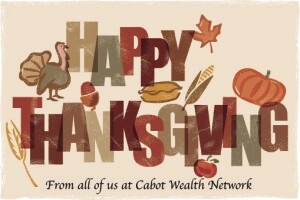When stock markets closed on November 21, you may not have felt the ground quake, but the news was fairly earth-shaking. That’s the day the S&P 500, the Dow, the Nasdaq and the Russell 2000 all closed at all-time record highs. It’s also the first time that markets have pulled off that trick in the 21st century. (The last time it happened was on the last day of 1999.)
If you’re student of the market, you may be more impressed. After all, following the March 2000 high in the Nasdaq at 5,133 at the height of the Tech Bubble, it wasn’t until June 2015 that the tech index finally made up its losses and reached new high territory.
[text_ad]
But having four new highs in major indexes is a very good sign even without the historical perspective, and a little background on what each index represents will show why.
The Dow (formally known as the Dow Jones Industrial Average Index) represents the performance of 30 of the largest capitalization stocks that trade on U.S. exchanges. Although its components aren’t strictly “industrial” any more, it’s a snapshot of big, highly liquid stocks, most of which pay dividends. The Dow often does well when more speculative stocks are out of fashion.
The S&P 500 (the S&P 500 Large Cap Index) tracks the cumulative performance of the 500 largest companies (based on capitalization) that trade on the New York Stock Exchange or the Nasdaq. It’s often considered the best single representation of the broad market, as it includes both growth stocks and value stocks. The S&P took seven years to recover from its March 2000 highs, stretching to new highs in 2007. But the index immediately rolled over again during the Great Recession and wouldn’t permanently top its Tech Bubble highs until early 2013. The S&P is the most-followed major index and has more index-fund and index ETF money riding on it than any other.
The Nasdaq (the Nasdaq Composite, often called “the tech-heavy Nasdaq) tracks stocks that trade on the NADSAQ Stock market, a separate exchange. It attracted lots of information technology companies during the Tech Bubble, which fueled huge advances, but also made it more vulnerable when the Bubble burst. It’s still considered more of a growth index, and does better when investors are willing to take on more risk.
The Russell 2000 Index tracks the performance of the 2000 smallest capitalization stocks in the Russell 3000 Index, which is a broad index that represents about 98% of all publicly traded stocks on U.S. exchanges. If an ETF or mutual fund identifies itself as a “small-cap” fund, it probably uses the Russell 2000 as a benchmark. In practice, the Russell 2000’s components average about $1.25 billion in market cap.
So, to get back to the question of what you should do because four very different indexes have all managed to bust into new-high territory on the same day, I would say you should either be buying stocks or preparing to buy stocks.
Positive momentum in the stock market, usually called a bull market, happens when money flows into stocks. In short, it’s when people see stocks as the best place to put their money to try to increase it.
For many years, investors have been so nervous, so timid about the future, that they’ve been cashing out of their equity mutual funds and buying bonds or other fixed-income. The situation was so scary that people were willing to buy government bonds that actually had negative interest rates! They were willing to accept a guaranteed small loss because they had no confidence in how the stock market might perform.
So when four different equity indexes hit new highs, the investor sentiment behind that achievement is optimism, and optimism has been in short supply for quite a while.
Having four indexes all flashing green lights is like having your boss, your father, your best friend and your astrologer all giving you the same advice. It pays to pay attention when that happens.
Cabot investment advisories, you won’t be surprised to learn, are my best idea for how to decide what to buy in this remarkable situation. We cover all investment styles, from growth stocks and value stocks to income investing and small-caps, plus options. Cabot has been giving good advice for more than 46 years, and we’ve seen it all before, including the last time all four major indexes hit new highs together. We’d be glad to show you how to play this strong market and everything the market throws at you from here on.
2016 has given us more uncertainty in the markets and conflict
in the political arena than was good for us. Here’s hoping that a plateful of turkey and a table surrounded by family and friends will restore our appreciation of all we have to be thankful for. I wish you a very happy Thanksgiving, and so does the entire Cabot Wealth crew. May you get all the pumpkin pie, televised sports, shopping, touch football and togetherness that you could possibly wish for!
[author_ad]

